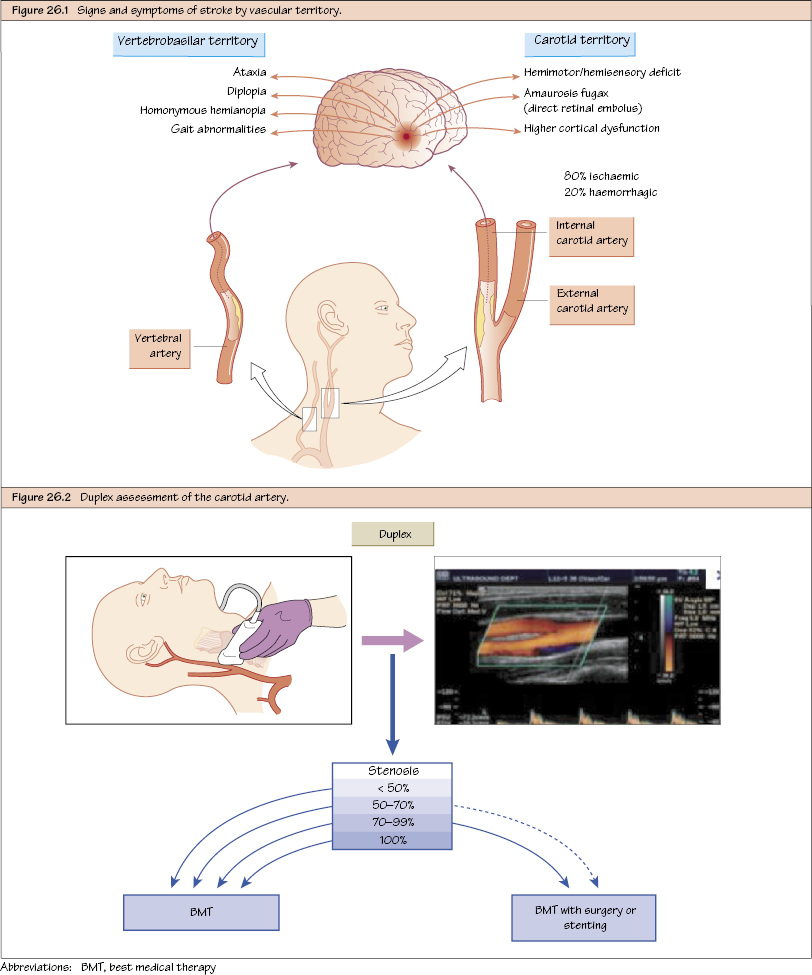Carotid Disease: Assessment and Treatment After heart disease then cancer, stroke is the third leading cause of death in the Western world. 20% of strokes are haemorrhagic, 80% are ischaemic – mostly due to embolus but some due to small vessel disease in the brain and occasionally from prothrombotic disorders such as myeloma or sickle cell. Main sources of emboli: It is disease in the carotid artery that has relevance to vascular surgery. A stenosis in the carotid causes problems because there is potential debris that could embolise to the cerebral circulation (the reduced flow to the brain from the stenosis is of relatively little significance because there is good collateral supply). The carotids serve the anterior part of the brain whereas the vertebral arteries serve the posterior part of the brain. It is crucial to establish if the patient’s symptoms are from the anterior circulation (or carotid territory) or posterior circulation (or vertebrobasilar territory), because surgery may be offered for the carotid but not the vertebral.

Overview
The Anterior and Posterior Cerebral Circulation
Anterior Circulation Features
Stay updated, free articles. Join our Telegram channel

Full access? Get Clinical Tree


